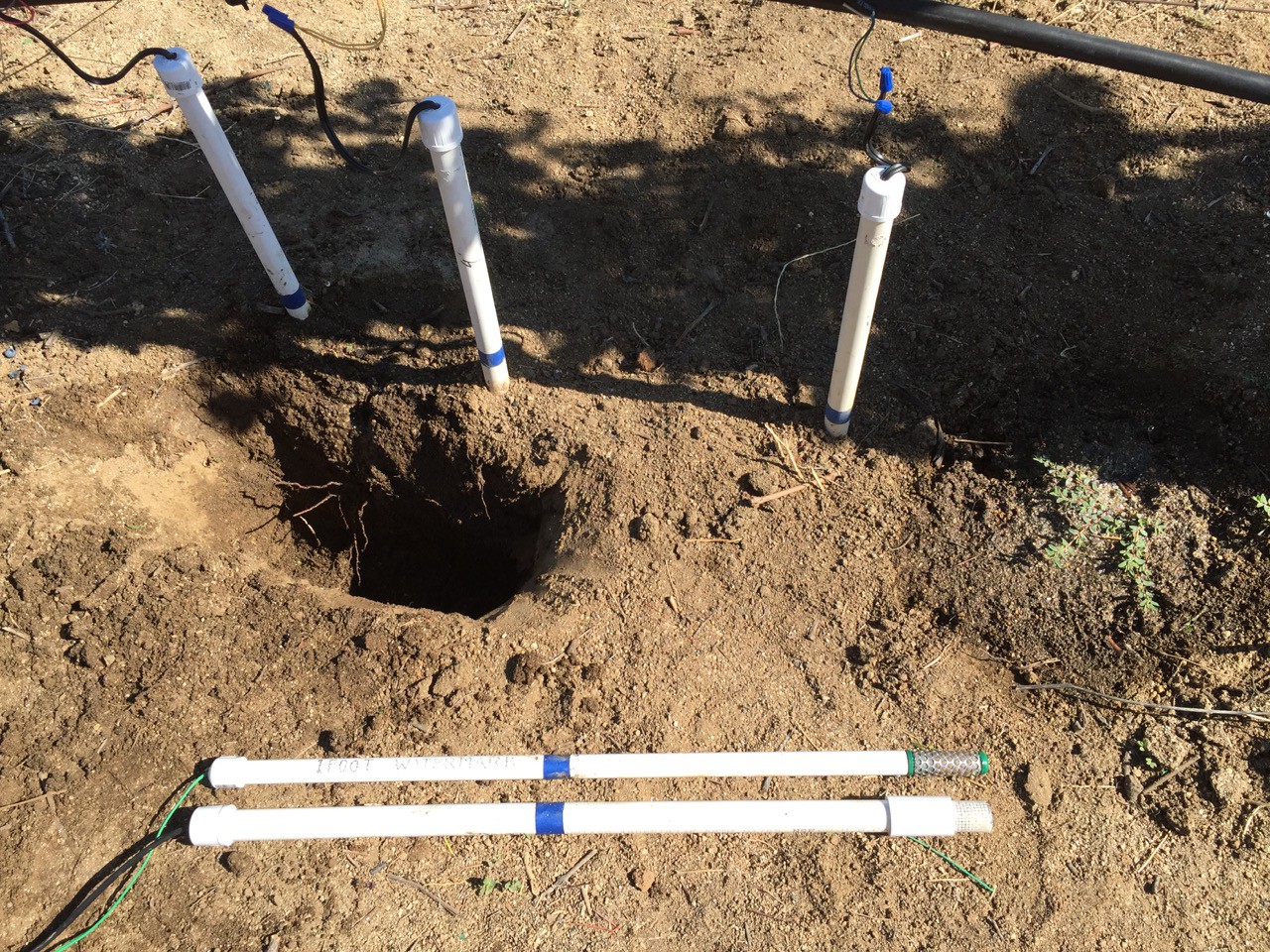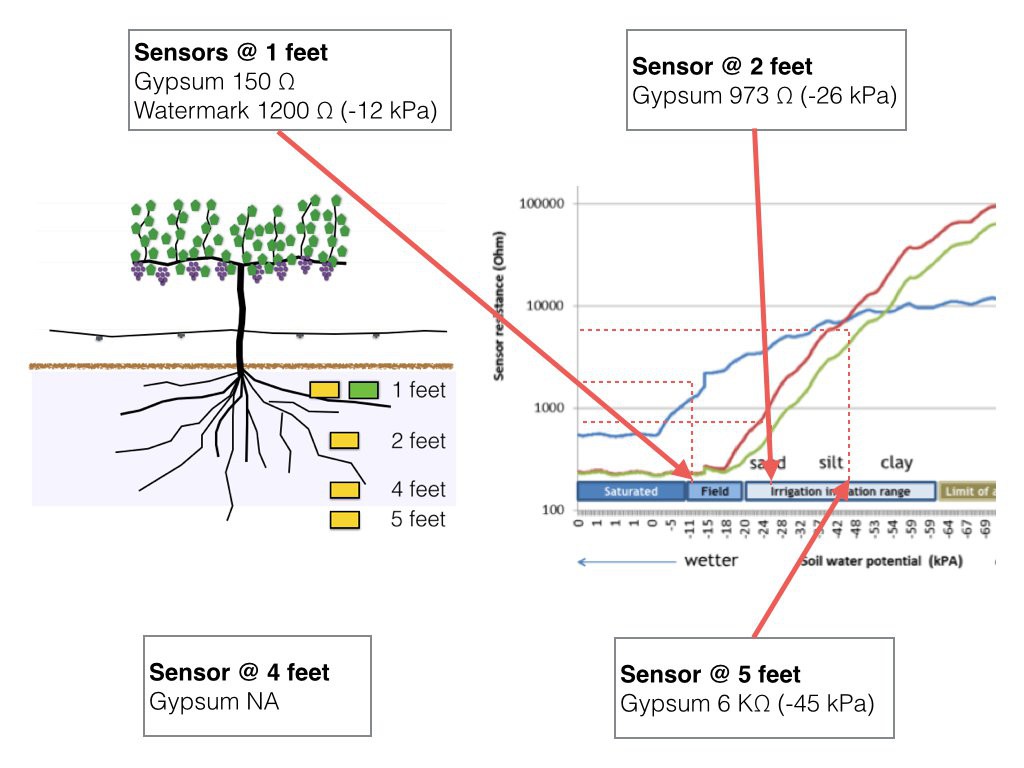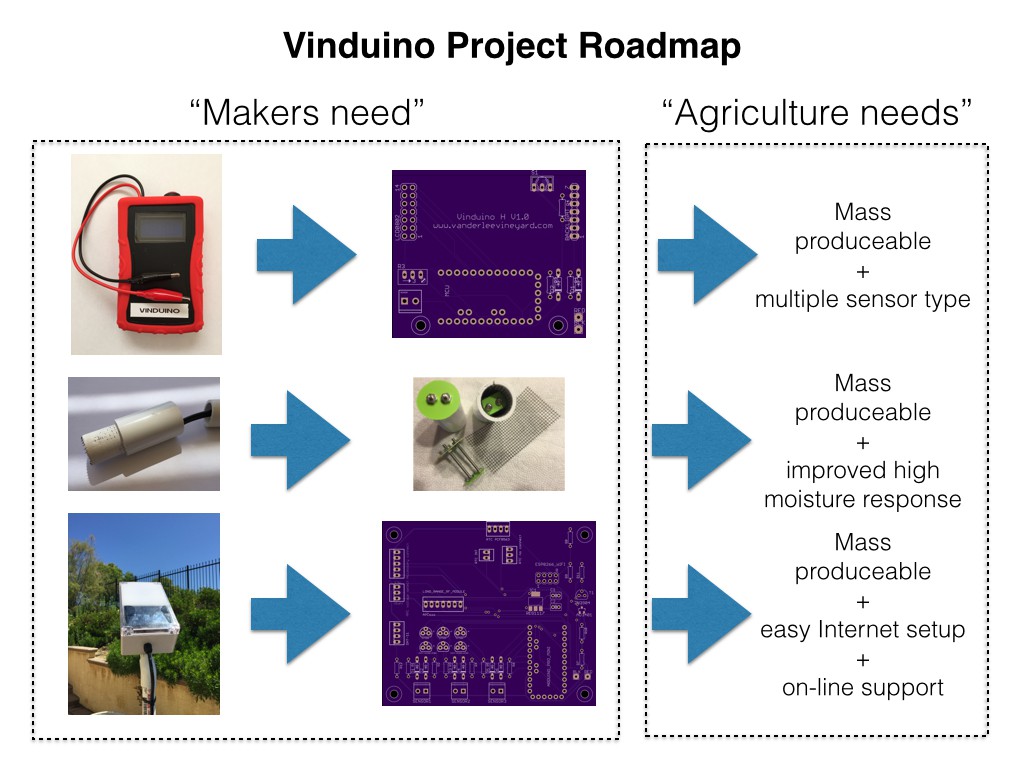Adding more sensors at 1 feet
To get a better picture of the soil moisture dynamics, I added sensors at 1 feet, in addition to the sensors at 2, 4, and 5 feet.
One sensor is the DIY gypsum sensor, and for comparison I added a commercial Watermark sensor.
From earlier comparison measurement data, I found that the gypsum sensor is not sensitive at high moisture (< -15kPa) , where the Watermark is showing a good response at saturated moisture levels.

Directly after the grape harvest (September 2), I stopped irrigation to see how the sensors would respond. Interestingly, the Watermark sensor at 1 feet, and the gypsum sensor at 5 feet were the first to show a response. At lower moisture levels -the point where you normally want to initiate irrigation- the gypsum sensor is sufficiently sensitive.
Vertical moisture distribution evaluation
The initial idea behind the Vinduino project was to replace the daily water use of a grape vine, by daily irrigation, and manage irrigation quantity and frequency such that irrigation water gets used in the active plant root zone before it can percolate out of reach of the plants.
Soil moisture readings taken after harvest, September 6, show moisture level distribution as expected and desired. High moisture levels in the top layers and root zone, and much dryer (-45 kPa) at 5 feet depth, below the active root system.
I left the 4 feet sensor out, as it shows signs of poor soil contact, making readings unreliable.
It takes a long time (months) before a stable moisture distribution is established, especially considering agricultural scale of this project.

Vinduino project considerations
To determine success or failure of a project like this, at least a full growing season should be considered. There were also some start-up mistakes and irrigation controller failure that impacted the end result, but overall I am pretty happy with the savings and much tighter control of our vineyard's irrigation.
Taking the Vinduino project to agricultural users
By making project details available on-line, an experienced electronics hobbyist should be able to reproduce the setup and results of he Vinduino project. And, of course, it helps that printed circuit boards are available to avoid wiring mistakes :-)
Nevertheless, for agricultural users to save 25% irrigation water by using this method of irrigation, the hurdle of building and programming the system should be taken away.
Farmers have a talent for finding the most efficient way of getting things done. Now we have field evidence that the Vinduino irrigation project can save water, the next step is to provide a "ready to use" solution that can be implemented fast and easy.
Food for thought :-)

 Reinier van der Lee
Reinier van der Lee
Discussions
Become a Hackaday.io Member
Create an account to leave a comment. Already have an account? Log In.